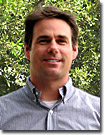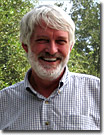Judges 2007

 | Dr. Jason Swedlow - Currently director of a research program at the Wellcome Trust Biocentre at the University of Dundee in Scotland, Dr. Swedlow is a co-creator of the Open Microscopy Environment, which has become an important tool for light microscopists around the world for management of digital image data. Each year, Dr. Swedlow teaches the Analytical and Quantitative Light Microscopy course at the Marine biological laboratory in Woods Hole, Massachusetts, as well as the Live Cell Imaging, Immunocytochemistry, and In Situ Hybridization courses at the Cold Spring Harbor Laboratory in New York. The research focus of Dr. Swedlow's laboratory is on mechanisms and regulation of chromosome segregation during mitotic cell division, and he is considered an authority on deconvolution algorithms and practical applications in fluorescence microscopy. |
 | Dr. Kenneth N. Fish - An Assistant Professor in the Translational Neuroscience Program in the Department of Psychiatry at the University of Pittsburgh, Dr. Fish uses knockout and genetic mutants that have subtle neuroachitectural abnormalities to study the functional consequences that mispositioning of a subset of neurons during development has on local circuitry. Studies using these mutants may be helpful in understanding aspects of the neuropathology that result in abnormal brain connectivity associated with schizophrenia, autism, and epilepsies. Optical microscopy techniques utilized in this research include confocal and multiphoton fluorescence imaging, as well as total internal reflection fluorescence (TIRFM) along with traditional widefield fluorescence methods. Dr. Fish also has experience with brightfield imaging modes, including phase contrast, differential interference contrast, and oblique illumination. |
 | Dr. Douglas B. Murphy - Professor Murphy is the Director of the optical and electron microscopy laboratory at the new Howard Hughes Medical Institute in Janelia Farm, Virginia. This resource is a core facility that provides equipment and services in fluorescence, confocal, and electron microscopy to laboratories throughout the research campus. Dr. Murphy's research interests include the dependence of microtubules in organelle transport and related microtubule behavior, including polymer annealing and the mechanism of binding microtubule-associated protein (MAP-2) on microtubule surfaces. He has also explored the mechanical and conformational requirements of the motor protein, kinesin. The core facility specializes in advanced fluorescence techniques (FRET, FRAP, TIRFM), confocal, multiphoton, and time-lapse in multiple fluorescence channels. Dr. Murphy has been a significant contributor to review articles and Java tutorials on the Olympus optical microscopy educational websites. |
 | Dr. Douglas B. Murphy - Professor Murphy is the Director of the optical and electron microscopy laboratory at the Howard Hughes Medical Institute in Janelia Farm, Virginia. This resource is a core facility that provides equipment and services in fluorescence, confocal, and electron microscopy to laboratories throughout the research campus. Dr. Murphy's research interests include the dependence of microtubules in organelle transport and related microtubule behavior, including polymer annealing and the mechanism of binding microtubule-associated protein (MAP-2) on microtubule surfaces. He has also explored the mechanical and conformational requirements of the motor protein, kinesin. The core facility specializes in advanced fluorescence techniques (FRET, FRAP, TIRFM), confocal, multiphoton, and time-lapse in multiple fluorescence channels. Dr. Murphy has been a significant contributor to review articles and Java tutorials on the Olympus optical microscopy educational websites. |
Not Available in Your Country
Sorry, this page is not
available in your country.